Over the last decade or so, “paneling” has become a “most dangerous game” of carefully deciphering the convention schedule, exploiting the rules and human endurance. Sleeping over-night outside Hall H has become the only way to enter and wait through 5 hours of not-what-you-wanted to get to that sweet, sweet Dr. Who panel!
Back in 1979, in you go! Half-way through? In you go!
I “covered” three panels, as far as I can tell. I am presenting these in no particular order as I cannot remember that order. I wasn’t really sure of my press credentials. I didn’t want to bother people that I didn’t know that well. People who I held in very high regard like John Romita Sr.
I am guessing that John is talking about drawing. Which for him is like us talking about breathing. Unlike for us, his breathing accomplishes much more. For example, with little effort he is making a Dr. Doom sketch.
It may have been the early days, but this was a sizable crowd for “Jazzy” Romita! And, no; he did not charge $20-60 for a signature.
Below: neither Rick nor I can remember what he was talking about, but towels to donuts, not a word was said about how late Peter was. And—wasn’t it cool that we had jack-assed all this equipment from the East Coast for the delight and delectation of comic fans!
Probably, Mr. Rick was talking about the planned improvements around the quality of printing involved with Weirdworld. A “gatefold” as a printing term was made famous by Playboy Magazine (I was a big fan of their Jazz Awards). Having a gatefold in comics—even such a non-comic as this planned magazine format—was a big deal.
If you take a look at the center pages of a comic book or stapled magazine—you can see it is one sheet of paper with a fold in it (that center sheet of paper is the only place where a “perfect” two-page spread can be had—of sure, you can place them anywhere in a book, but make sure not to put dialog balloons or faces in the center…). That fold is where the staples are. A gatefold adds a third page to either the left side or right. (It is possible to add pages to both sides—dig out your copy of The Guide to the X-Mansion for examples of such grandeur!) It is not obvious but those gatefold pages need to be printed separately—set aside to dry and are later integrated into the assembly of the rest of the book. Quite a bit of planning. A detail that might not occur to the casual reader, but the “fold” of a gatefold must be within the paper trim area. Or, of course, it would be trimmed away! So figuring all that out was only easy if you knew how.
Sure all these pictures show us whooping it up but the gang back home was poised on the starting blocks for these pages to come back. Rick was still the Editor of this project and Weirdworld was the crucible of high quality printing prior to the release of EPIC Magazine. Which was another high-end art magazine Rick was putting together at the same time as WW. Thus, Rick had some good people in his department at the time, Nora Maclin was a very pleasant ex-pat Russian art director who showed us that talent, good art direction and design are universal. Davida Lichter-Dale was her Assistant with more than the usual creativity. She was responsible for assembling the art and keeping track of what went where. Marking up the boards so that the printers knew what to do was also a big deal!
So! No doubt, Rick was talking about what a big step this was for Marvel and comics in general and like, I guess, art!
Below: Rick “Marshall Rick” Marschall telling it like it is, baby.
I think I can see – right here! – is where Rick was pumping up his aneurism. Peter has rolled back, AWAY from the drafting board and artwork, in order to show off his biceps and hold forth on his background. Peter we can spot easily, Rick is to the image right in a white shirt, chafing his own wrists to revive himself. Ralph Macchio is center image wearing a mime costume without his beret.
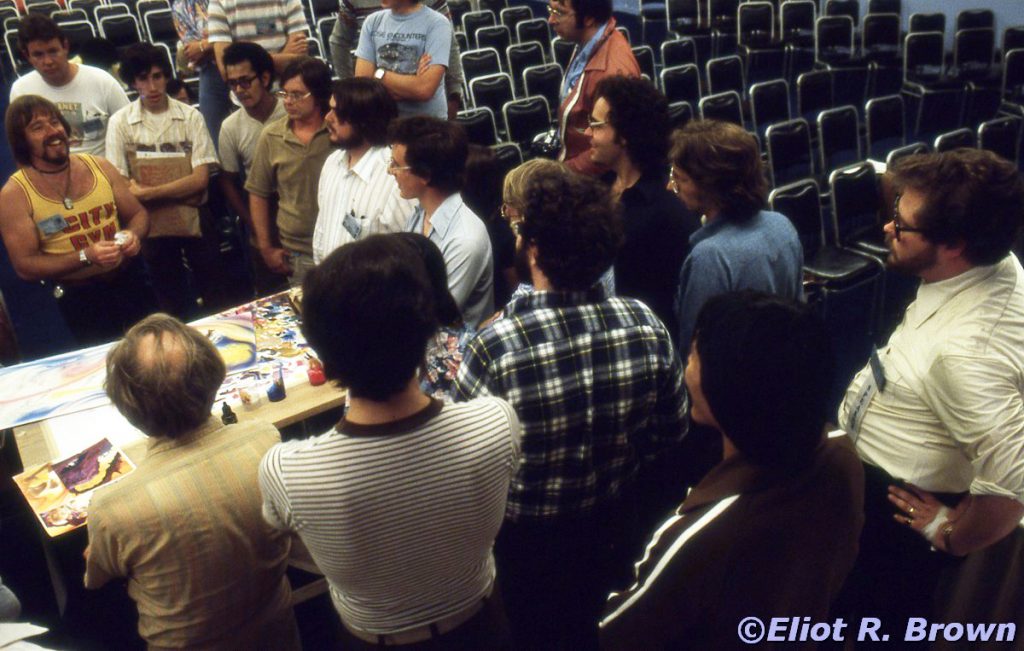
Next! On to a much more majestic line up of giant names, towering important and impressive figures in the comic industry—plus Rick Marschall.
What a roster of Who’s Who in Comics (plus who’s that on the end). Rick Marschall, then Editor In Chief Jim Shooter, Creator Writer Marv Wolfman, Comic Statesman Writer and Editor Mark Evanier, Creator Writer Len Wein, Legendary Writer Marty Pasko and bringing up the right side is no less than Roy Thomas who literally needs no introduction.
Another startling difference between now and then—you can just walk up and talk to these guys. Of course in a place like Artist’s Alley from then to now you can talk to them—but for a serious conversation you would be holding up a line that could stretch to the boat basin. Here, you can hang on and yak for hours.
Sometimes the pros sit down for a minute… Haven’t asked Roy but Rick does not recall even meeting Roy this trip. Ah well– At this time, Rick was one of the foremost collectors and authors of newspaper strips. Roy was always an expert on the early days of comics, both the creators but also the created, the characters and where they appeared. He is nowadays regarded as the source of early comic history.
End Part 4—coming up, a convention is where you meet, dine and sometimes do business with the gamut of great, near-great, not so hot and — oh yeah– stare at primordial cosplayers. All in Part 5!
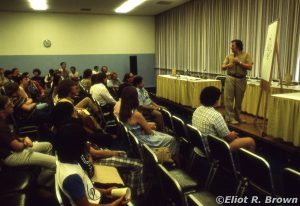
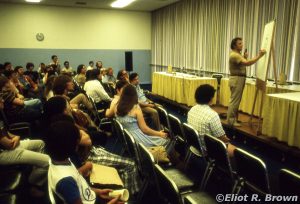
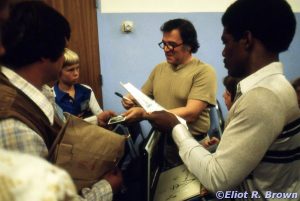
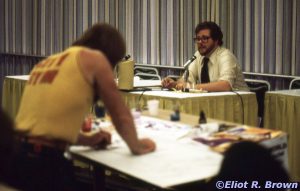
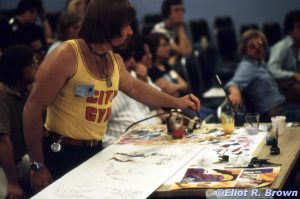
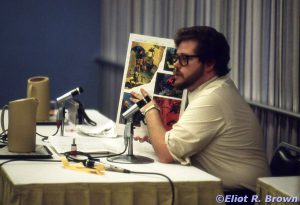
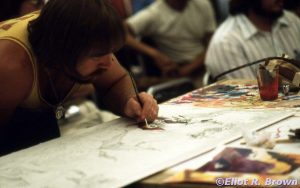
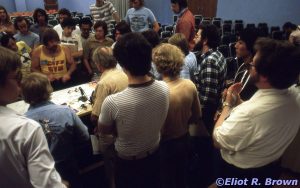
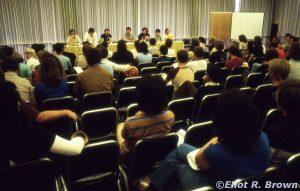
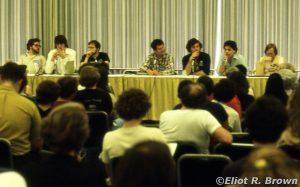
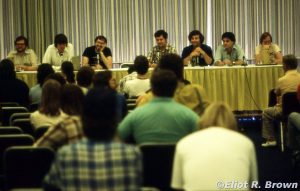
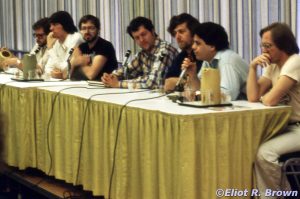

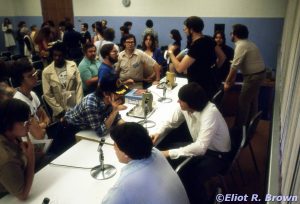
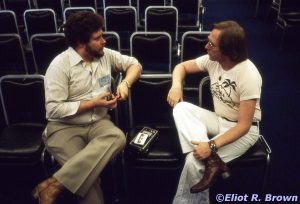
Thanks for the memories…!
Truly a great event, and the crucible of great things, that ’79 Comicon.
Indeed! For all the fun, crazy stuff I do remember, I wish I could remember more…